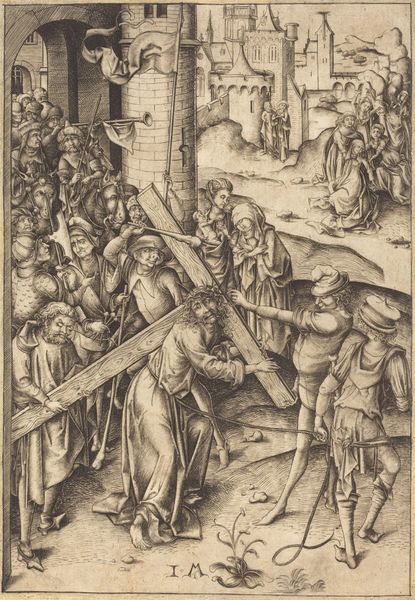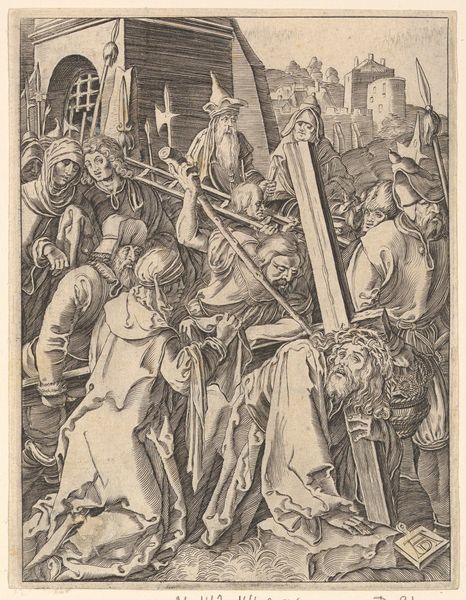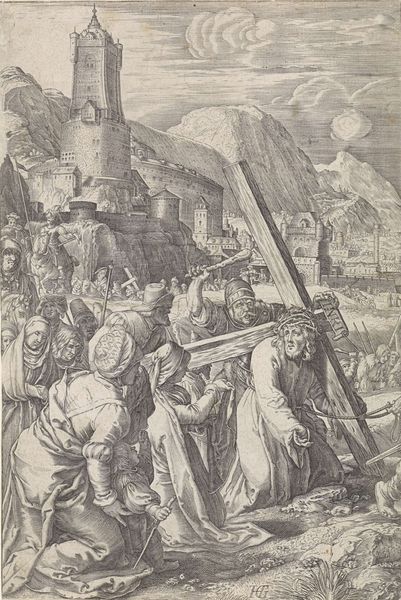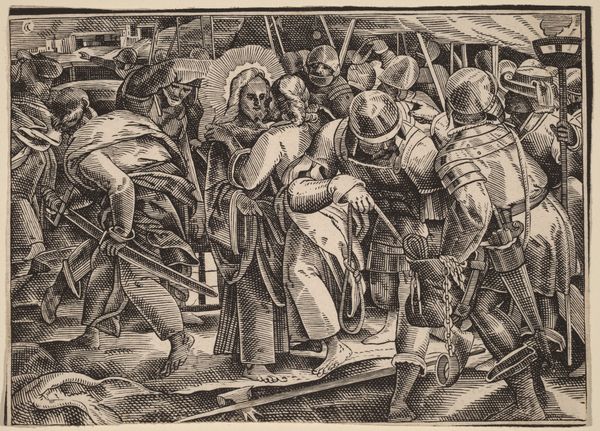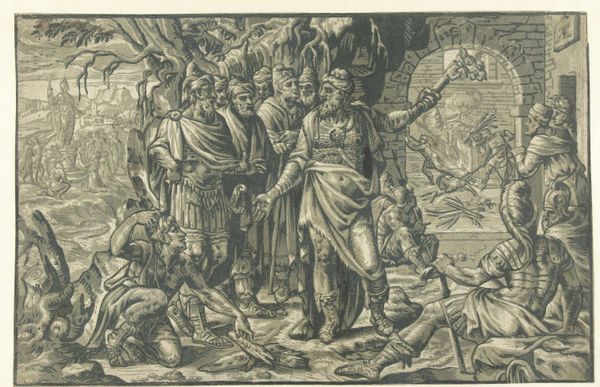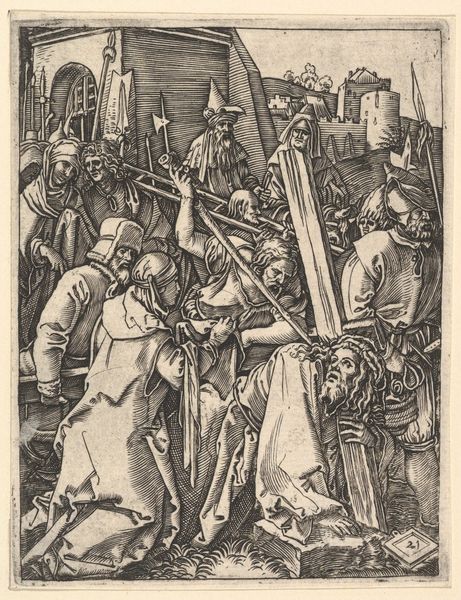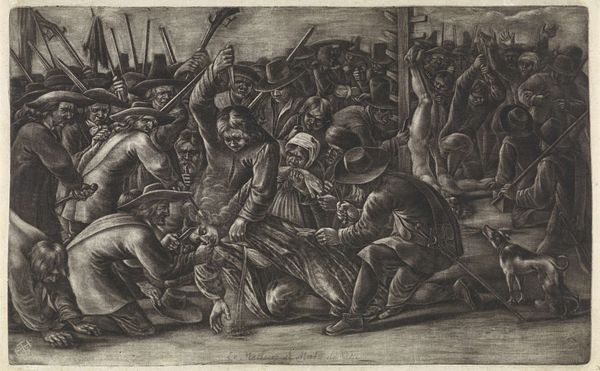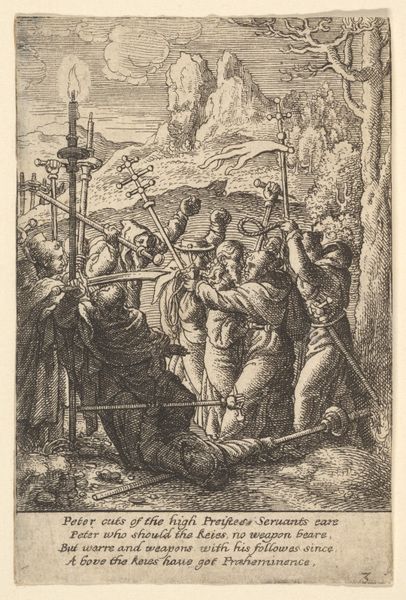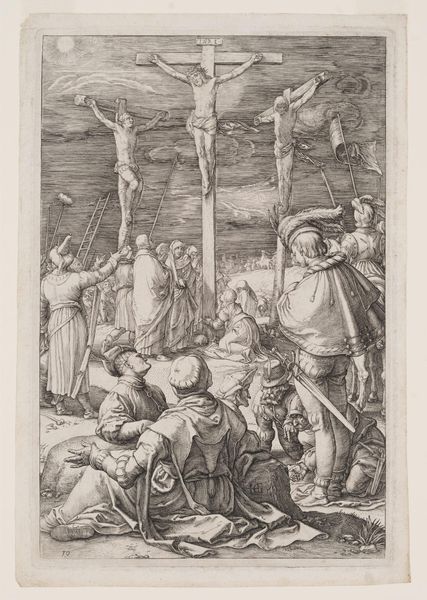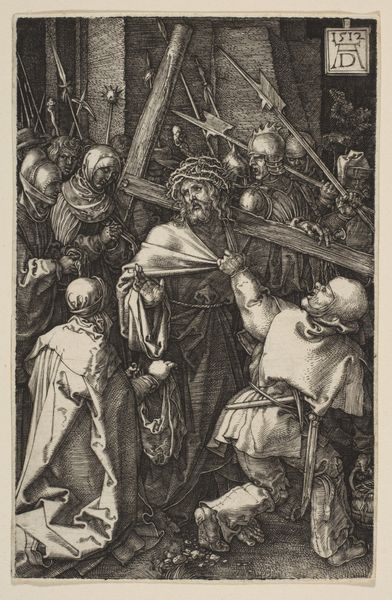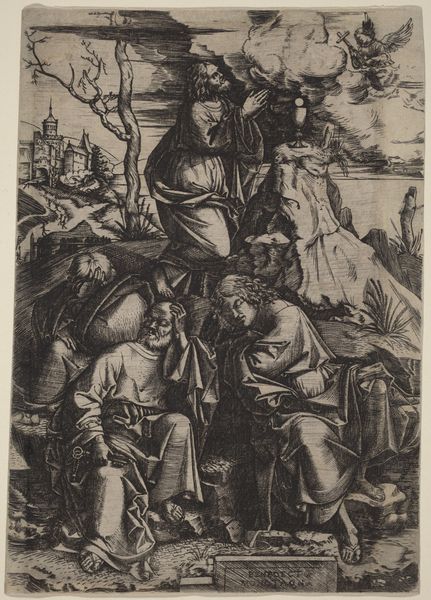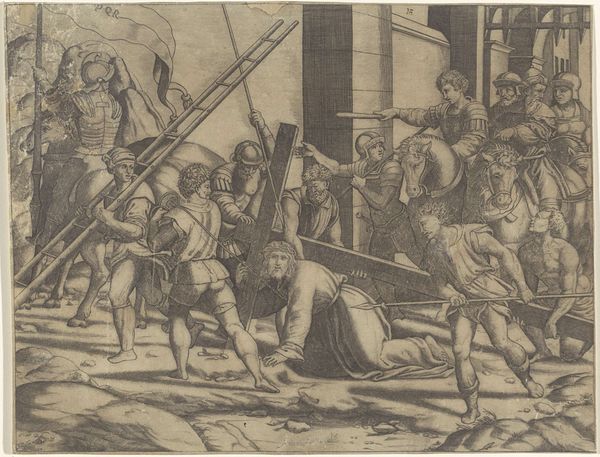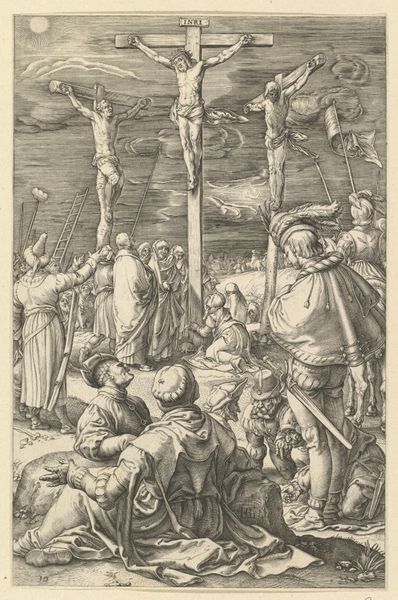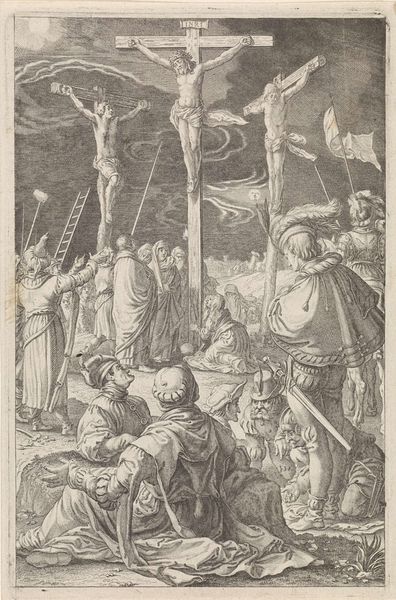
drawing, print, engraving
#
drawing
#
ink drawing
#
narrative-art
#
baroque
# print
#
pen sketch
#
pencil sketch
#
figuration
#
form
#
pencil drawing
#
pen-ink sketch
#
chiaroscuro
#
line
#
history-painting
#
engraving
Dimensions: width 335 mm, height 223 mm
Copyright: Rijks Museum: Open Domain
Curator: What a potent image. This is a print entitled "Kruisdraging," or "The Bearing of the Cross," attributed to an anonymous artist working sometime between 1611 and 1702. Editor: The drama is almost overwhelming. The lines of the figures, all leading toward a central point of anguish, give the scene a very oppressive feel, even though it’s a black and white print. The weight, both literal and metaphorical, is palpable. Curator: Absolutely. This scene is taken from the New Testament, and depicts Christ carrying the cross towards his crucifixion. Look closely and you’ll notice how the artist renders the textures of clothing and skin to distinguish the crowd from the suffering Christ. We must not overlook that art is rarely disconnected from politics or religion. Editor: The symbolic language is so evocative. Beyond the obvious suffering of Christ, there’s also the crown of thorns and how his gaze remains directed downwards. It adds to the scene's depth and psychological impact, evoking both sorrow and perhaps a quiet defiance. He accepts his fate even under extreme physical and spiritual torment. Curator: Indeed. It's fascinating to see how the artist used line and chiaroscuro to create a clear distinction between good and evil, oppressors and the oppressed, reflecting the prevailing social hierarchies of the time and religious moralizing. Editor: And those spear-bearing figures pressing forward; their faces hidden or turned away, heightens the emotional tension. Each character has its role in a tragic event—roles that resonate across historical and cultural interpretations. The details in the guards’ attire even give insight into military power during that period. It could reflect attitudes regarding race or class present in society, perhaps mirrored in other works of art. Curator: Precisely, consider the depiction of the crowd. The variety in their expressions. This work not only depicts a biblical story but also critiques social dynamics around justice, faith, and power—themes as relevant then as they are today. Editor: I agree; art always prompts us to reconsider historical events in relation to our present. The enduring symbolism lets us examine the psychology behind our behavior and our understanding of good versus evil. Curator: These historical narratives provide vital perspectives on human behavior across the ages. Art like this helps to unveil our cultural compass and to identify opportunities for transformative, collective change. Editor: Exactly, exploring these enduring visuals allows us to reflect on human narratives, pain and triumphs, and their effects through eras and cultures.
Comments
No comments
Be the first to comment and join the conversation on the ultimate creative platform.
